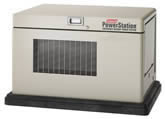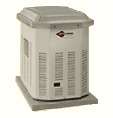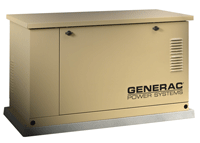Home Backup Generators
Home backup generators, sometimes called "home standby generators", have become very popular in recent years with residential homeowners. The home backup generator is usually installed on a small pad just outside the residence and attached to the home utility power box by means of a automatic transfer switch. When utility power fails the unit is activated and begins powering some or all of the electric circuits in the home, when the utility power resumes the standby generator is disconnected from the home circuits, and it powers-down.Part of the popularity of the home backup generator is due to the high availability of both propane and natural gas fuels in the residential environment. Since backup generators are installed outside the residence they have easy access to any existing gas lines. Where natural gas does not exist in a neighborhood the homeowner may decide to install a large propane gas tank that can be periodically refilled by a local gas vendor. These fully automatic systems are the most affordable and easiest generators to install. A properly installed automatic home standby generator system will restore power within 30 seconds of an outage, whether you're home or away. Power ratings range from 5000 to 50,000 watts to meet a wide variety of homeowner applications. These generators should always be installed by a qualified electrician and require the use of an manual or automatic transfer switch.
These stationary exterior systems home backup (standby) systems are larger and more powerful than the smaller portable homeowner generators that are more suited for running fewer electric devices and operate manually. Consider your needs and budget carefully before deciding which size home generator to purchase.
Several manufacturers provide these type of generators, such as: Coleman, Generac, Guardian, Onan, and Briggs & Stratton. Click on the links (left) to the brand of your choice to review their models.


